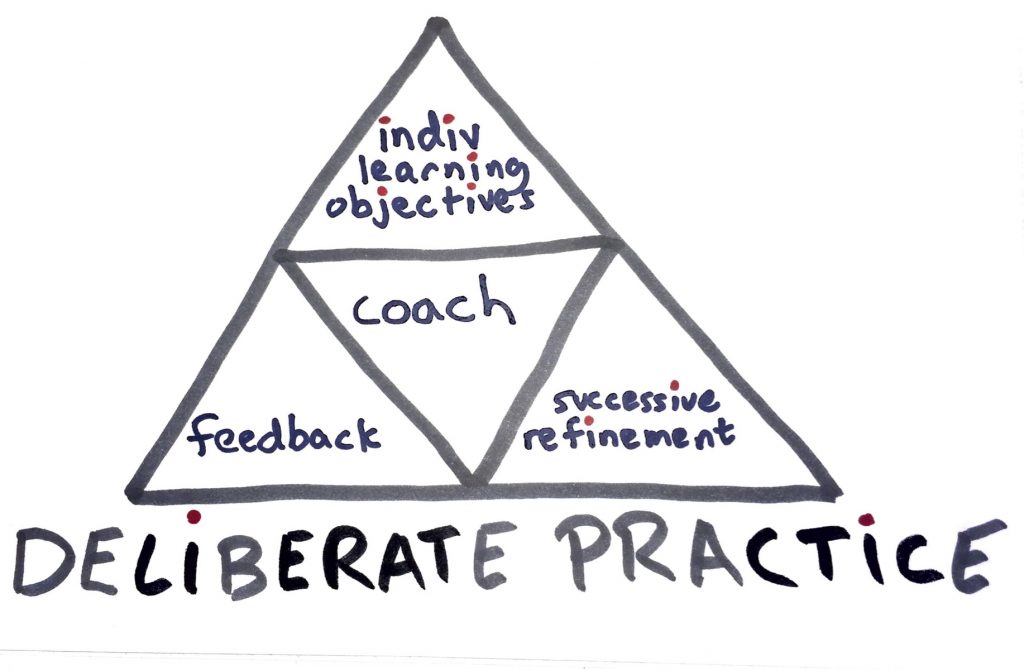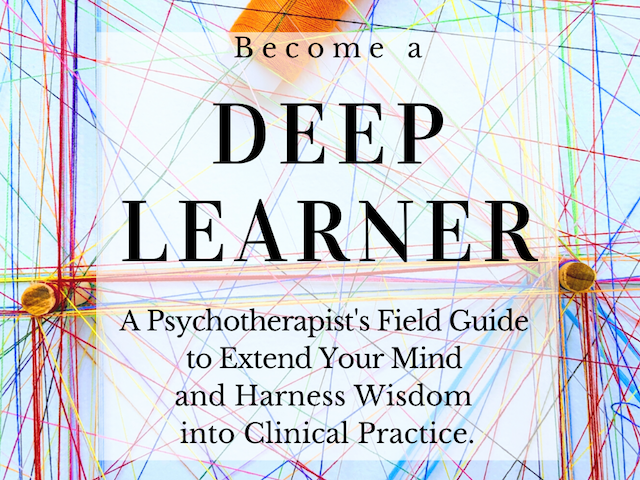There’s a big difference between what’s right and what’s right for you.
This is why deliberate practice (DP) is not a cookie cutter approach, but it is highly individualised.

Figuring out what’s right for your professional development requires us to ask ourselves 3 basic questions: “What-to,” “How-to,” and “When-to.”
1. “What-To”
The “What-to” question is about the content goal. What should I work on that has leverage on improving my outcome? (For more on Leverage, see this keynote )
There are many things one can be working on, but in order to be in good use of our time and effort that actually translate our learnings into better client outcomes, we need to figure out the “what” before the “how”
However, the “What-to” question makes one big assumption, that you know where you are. In other words, you know your baseline performance. Take the time to figure out where you are before where you need to go.
2. “How-To”
The “How-to” question is about the process of how you learn. How do I optimise the way I learn? How do I take notes and reflect in a way to synthesises my current and past learnings?
For more on this how to capture notes with a free app that I highly recommend, watch these videos:
For more about optimising the way you learn, check out our Deep Learner Course.
Do not underestimate the power of improving how you learn. In fact, learning to learn well is one of the top skills one can develop. While many might acknowledge this, few would actually invest time and energy to leverage their ability to learn. And those who do, end up way ahead.
The Deep Learner course is built and design to help therapist harness your ability to learn well.
3. “When-To”
Finally, the “When-to” question is about timing and consistency.
Some the “when-to” questions include
- “At this point in my career, what requires my attention?
- Given the development in my personal life, family responsibilities and professional endeavors, what needs to take a frontseat, and in so doing, what needs to take a backseat at this point in my life?
- How can I set up time to consistently engage deeply with cosuming good inputs and work on my therapeutic abilities?
Different seasons have different needs. More importantly, because of competing priorities in both our professional and personal lives, we need to choose what not to work on in order. Caring for an ailing parent and expecting to keep up with an intense deliberate practice regiment is simply impractical. When I’m supervising therapists, though this is not therapy, the thing to do is to help the therapist work through their fears that is unearthing from their personal lives that were triggered from their clinical work.
Outsourcing
There is a temptation to outsource our decision making efforts on what to deliberately practice on to improving our preferred approaches of psychotherapy i.e., get better at particular treatment models.
Evidence-based approaches seeks to find out “What’s right.” That may be a good starting point, but not a good endpoint. You can’t outsource the decision making of figuring out “what’s right for you.” For example, EMDR might be generally a good approach to consider when working with trauma, but it might not be the thing to learn if your baseline outcomes on aggregate shows a higher than benchmark of people dropping out of therapy after the first session.
We owe it to ourselves to take the time to reflect on the 3 questions of “What-to,” “How-to,” and “When-to.”
We owe it to ourselves, but it doesn’t need to be an individual sport.
As Ringo Starr sings, “With a little help from my friends.”




2 Responses
[…] more on the use of Obsidian to assist in your learning efforts, see this post: The Difference Between What’s Right and What’s Right for You).So when I learned about Hook for Mac, I was “hooked” (sorry, couldn’t […]
[…] The Difference Between What’s Right and What’s Right For You […]